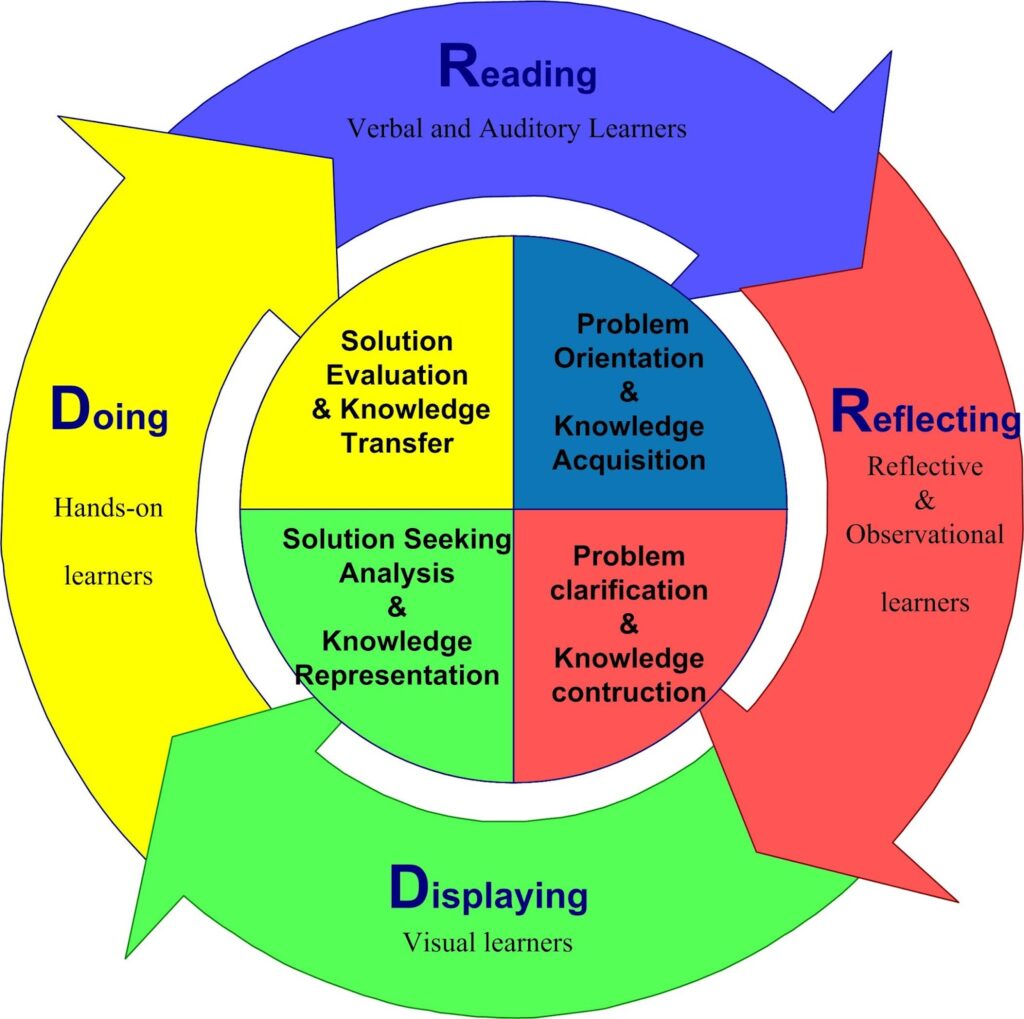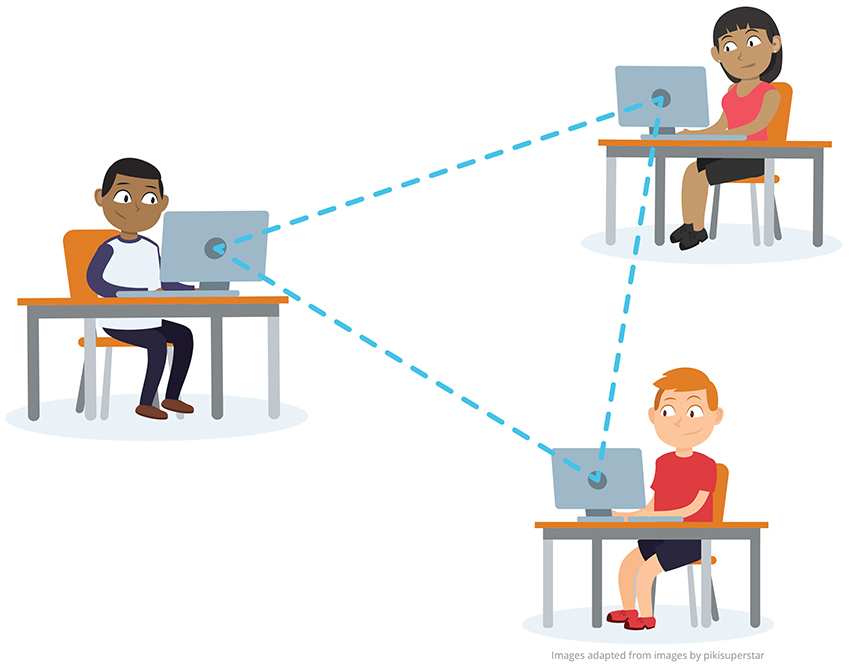
Through this week’s readings, the new thing I came across is Bonk & Zhang’s R2D2 model. It can be a thorough guide to design a successful virtual community. The four components of this model that are Reading, Reflecting, Displaying, and Doing are based on several learning activities and strategies. “If instructional designers involved in distance learning initiatives as well as online instructors take these four types of learning and learning activities into account when designing and delivering online and other forms of distance learning courses, they should experience higher success rates with diverse students” (Bonk & Zhang, 2006).
While going through this model, I was thinking of Bloom’s taxonomy as well. Different models provide different hierarchical structures to promote learning. I found this model quite interesting and easy to grab. I could also relate it to our present classes as throughout this graduate program, I have observed all four types of learning techniques well incorporated in the designing of both our online and in-person classes. Bonk & Zhang have provided a detailed list of learning activities for each type with several supporting tools and styles. For me all of them are interesting but following the question prompts, my favorite will be online discussions (group discussions and presentations), collaborative group paper writing, and interactive visuals with online chat.
Online discussions (group discussions and presentations)

Online discussions and presentations are always helpful in building an effective learning environment. The technology/tools/resources that support online discussion and presentations are Chat, Instant Messenger, bulletin boards/forums, Yahoo groups, and listservs. I prefer online discussions because of the teacher and peer collaboration, responses and feedback that can help peers develop an interactive session and communicate with each other regarding the topic concerned. Through these discussions they can also help each other understand various difficult concepts and support each other in several diverse ways. Chats, Instant Messengers, bulletin boards and forums give a platform to students where they can respond promptly, ask questions to each other, feel free to talk about their confusions and get instant solutions. I remember the small activity we did in class on Padlet. Padlet is one of the forums that is easy to create and can bring many people together at one time. It is one of the best discussion boards where students can come together and discuss a topic, raise questions, provide solutions, share ideas, give feedback, acknowledge others’ efforts, and suggest possibilities while staying connected with peers and teachers.
Collaborative Group Paper Writing

Collaborative group paper writing is second of my preferred learning activities. The supporting tools or resources Bonk& Zhang provide for this activity are SharePoint, Groove, and Word etc. All of us have gone through this activity many times. Even our group discussions and in class activities are an apt example in this regard. Google Doc is always helpful in drafting students’ planned data. Through this platform, students can work on the same document together while staying in their comfortable couches or zones. They can draft, edit, review, revise, and proofread the material together. The facility of sharing is tremendously helpful which is used by peers and teachers to provide their feedback and comments on that paper. Being a magnificent support for group paper writing, I find SharePoint and Google Docs extremely easy to use.
Interactive Visuals with Online Chat

Personally speaking, I am a visual learner and I always learn better when I have audio/visual support. I believe that most of the students learn better through visuals and here in my graduate program, I was lucky to have teachers who used this activity most frequently in the classrooms. www.learningbydoing.com mentioned by Bonk&Zhang can be an additional source of interactive visuals for students like many others. I have not experienced it yet, but I can well imagine its benefits. PowerPoint slides are common examples which speed up the learning process when online chat is added to these slides. Online chat with these visuals clarifies the ideas which are difficult to understand apparently. Visuals with chat have a long-lasting effect on students’ memory. Through this type of presentation, students can retain information for a longer period, they can understand the concepts faster as compared to the simple texts and can self-reflect.
Importance of Motivation
Bonk&Khoo (2014) have given importance to four theoretical perspectives regarding motivation. They are behaviorism, cognitivism, constructivism, and sociocultural theory. I remember my Fall semester last year. We came across all these perspectives in detail with Dr. Bradshaw and we had remarkably interesting discussions about them. I think all of them are important for motivation and community growth, but behaviorism and cognitivism play a pivotal role in increasing motivation in students. It is especially important to keep the behavioral aspect in mind while designing a learning environment. If we can understand students’ behavior, we can plan strategies and activities accordingly to facilitate and motivate them. Cognitivism is another perspective that is crucially important to consider. Learners’ cognitive abilities should be valued and focused. Strategies and models should be used that can polish students’ cognitive abilities. R2D2 and Bloom’s Taxonomy are good examples in this regard. According to me, both behaviorism and cognitivism are intricately connected to SDT and without them, it cannot be well implemented. SDT gives independence to students and increases their intrinsic motivation to learn effectively and without behaviorism and cognitivism, SDT seems to be failing.
References
Bonk, C. J., & Khoo, E. (2014). Online motivation from four perspectives. Adding some TEC- VARIETY: 100+ activities for motivating and retaining learners online (pp. 31-43). OpenWorldBook.
Bonk, C. J., & Zhang, K. (2006). Introducing the R2D2 model: Online learning for the diverse learners of this world. Distance education, 27(2), 249-264.
Kaylee McKinney
April 1, 2022 — 12:31 am
Nida,
Great post! I really enjoyed the different visuals you have put up to further explain the perspectives. I agree that Google Docs has really changed interactive feedback on others papers – and it definitely reminded me of our Mini-Design assingments.
Great job!